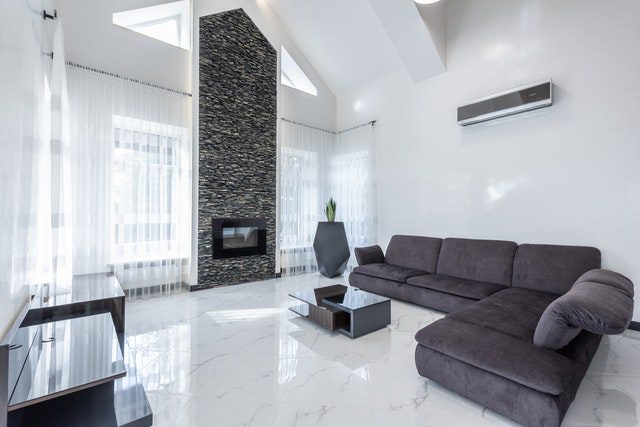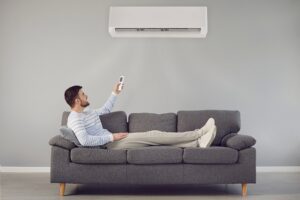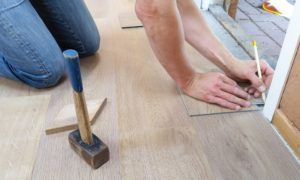When it comes to hot summer days, air conditioners are the first things we go to cool down at home. We leave them on all day to ensure that our family is happy when going about our day-to-day work and that our nights are spent in cool and comfortable sleep. As a result, our air conditioners often face lots of use, typically at low temperatures.
As with many HVAC systems, keeping your air conditioner well maintained is highly important. No one wants to use their air conditioner for months only to have it fail in the middle of the hottest day in summer. As such, calling a technician to regularly check and maintain the complicated inner workings of the air system is needed. Technicians are taught exactly how to check and fix any problems they might find and can even point out ways to do it yourself in between check-ins.
To get more information on your air conditioner and how to maintain it to ensure great working efficiency, this article covers some of the checklist basics of what a technician might do. And to learn more about how a technician can maintain and repair your AC, this page has all you need to know.
Table of Contents
A typical air conditioner professional’s checklist
Lubricate moving parts
Air conditioners are often made out of many different parts that move and shift against each other, causing wear and tear. These parts are greatly important since they’re what sends the cold air throughout your home. Without the proper care, these parts can wear down faster and faster until they break and need replacement. By lubricating each moving part carefully, your technician will make sure that the friction is reduced and subsequently reduce the need for frequent replacements or repairs.
Tighten electric connections
Ensuring that the electrical wiring inside the air conditioner is properly tightened is just as important as guaranteeing that any moving parts are lubricated well. Many of these wires are what power the entire system or carry the signals needed to turn the air conditioner on or adjust the temperature. During maintenance, your technician will ensure that any wires aren’t loose and will tighten any for you. If any wires are frayed, those will be replaced since they can cause sparks, equipment failure, and even fires.
Check the system’s settings and controls
In addition to checking for any frayed or loose wires, your technician will also make sure that the system works. If your air conditioner is a variable speed fan model, they will make sure that the fan moves at the appropriate speed on the appropriate settings. They’ll also check to see if the thermostat settings work as they should; the system releases cold air at the right temperature when programmed at the set level. On top of that, your technician will also check that the parts do what they’re supposed to at the right settings.
Check the drain lines
While not as vital to the efficiency and lifespan of your air conditioner, cleaning out the drain lines is still needed regularly, especially in humid climates. If the drain line gets clogged with slime or other gunk, it can lead to leaks and moisture problems. The moisture resulting from the clog provides an environment for bacteria and mold to grow, effectively tainting the air coming through the air conditioner.
Your technician will check the system’s drain pipes for any deposits and clean them out if any are found. They will also repair any leaks and replace any broken pipes or drain pans.
Do it yourself at home
As mentioned, there are several different steps you can take to maintain your own air conditioner without calling a technician. Most of these steps are quite simple and don’t require any additional tools.
Check and replace your air filter
One of the easiest ways to ensure that your air conditioner is running well is to check the air filter. Depending on what type of air filter your conditioner uses, it can vary the recommended time to replace it. If it uses pleated air filters that are generally thicker, you must change it out every 90 days or three months. If the filters are thin and non-pleated, the time to change it out drops to 30 days or one month. Another important factor to consider is your living conditions. Simple things like where you live, if you have any pets, or if you have any allergies can shorten the time even more.
When it comes to replacing the filter yourself, the steps are quite simple. As with most HVAC systems, you need to first turn the system off first and then remove the access panel to the filter. When removing the filter itself, be careful not to let any dust fall out, as it can aggravate allergies and cause health issues if dispersed throughout your house. When placing the new filter in, ensure that the front does face towards you. Most air filters have an arrow to help with installation; the arrow should point in the direction of the airflow or towards the fan.
Maintain your thermostat
There are a few important things to know when making sure the thermostat is working as it should. Most thermostats run on batteries. Making sure it functions well is easy. However, also make sure that there aren’t any heat sources nearby that can damage the batteries and any other delicate wiring inside it. The thermostat is also an important part of the air conditioner, as it regulates the entire house’s temperature. Keep away sunlight, lamps, or other appliances that may generate heat.
Takeaway
By following this checklist you can ensure that your air conditioner is working well and at its peak efficiency is vital to your everyday comfort. It requires careful and precise maintenance that can only be done by a trained professional. However, there are also a few ways to ensure that it runs well, one of which requires proper cleaning of both your indoor and outdoor units.
Featured Photo by Max Vakhtbovych: https://www.pexels.com




